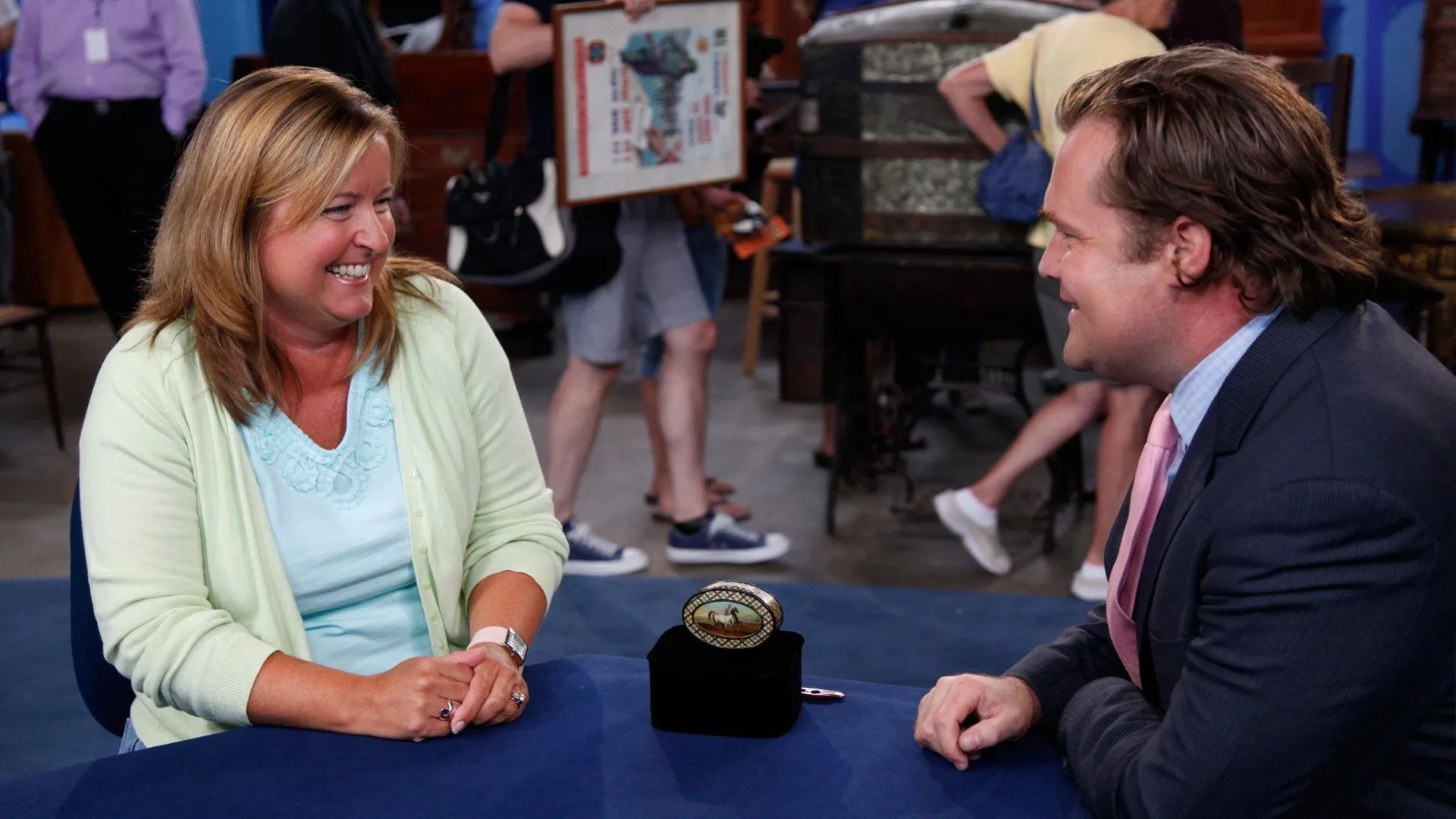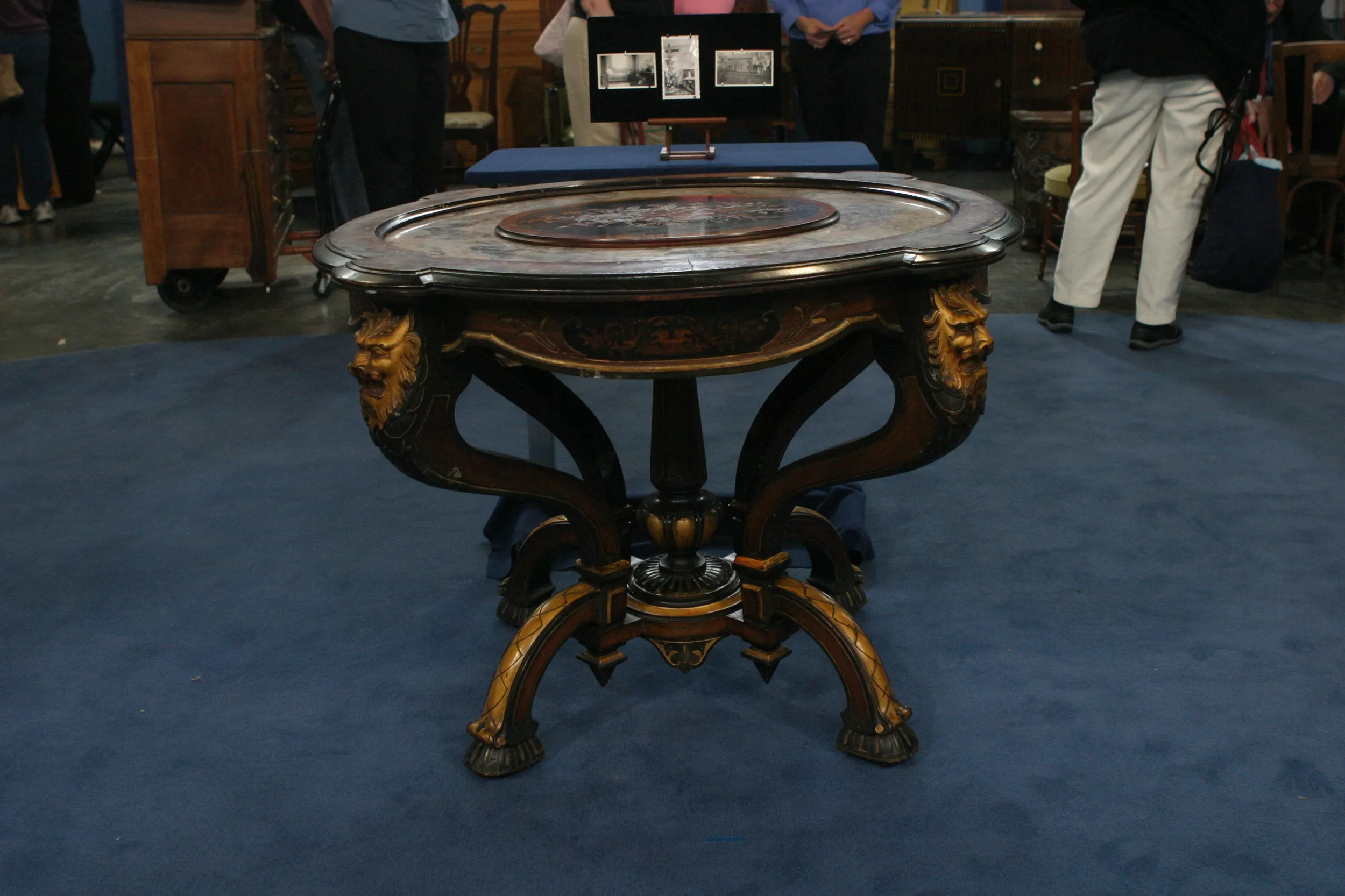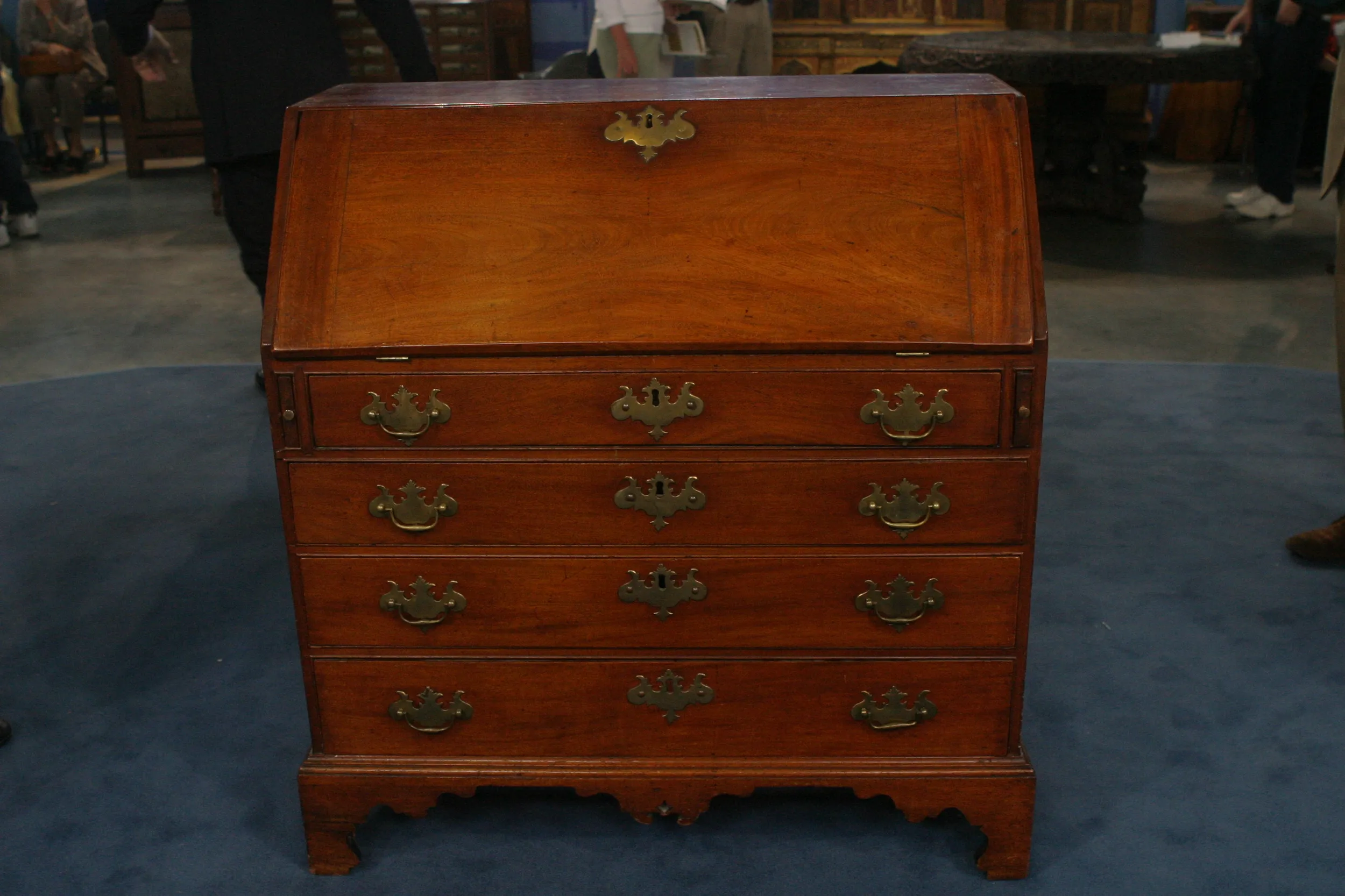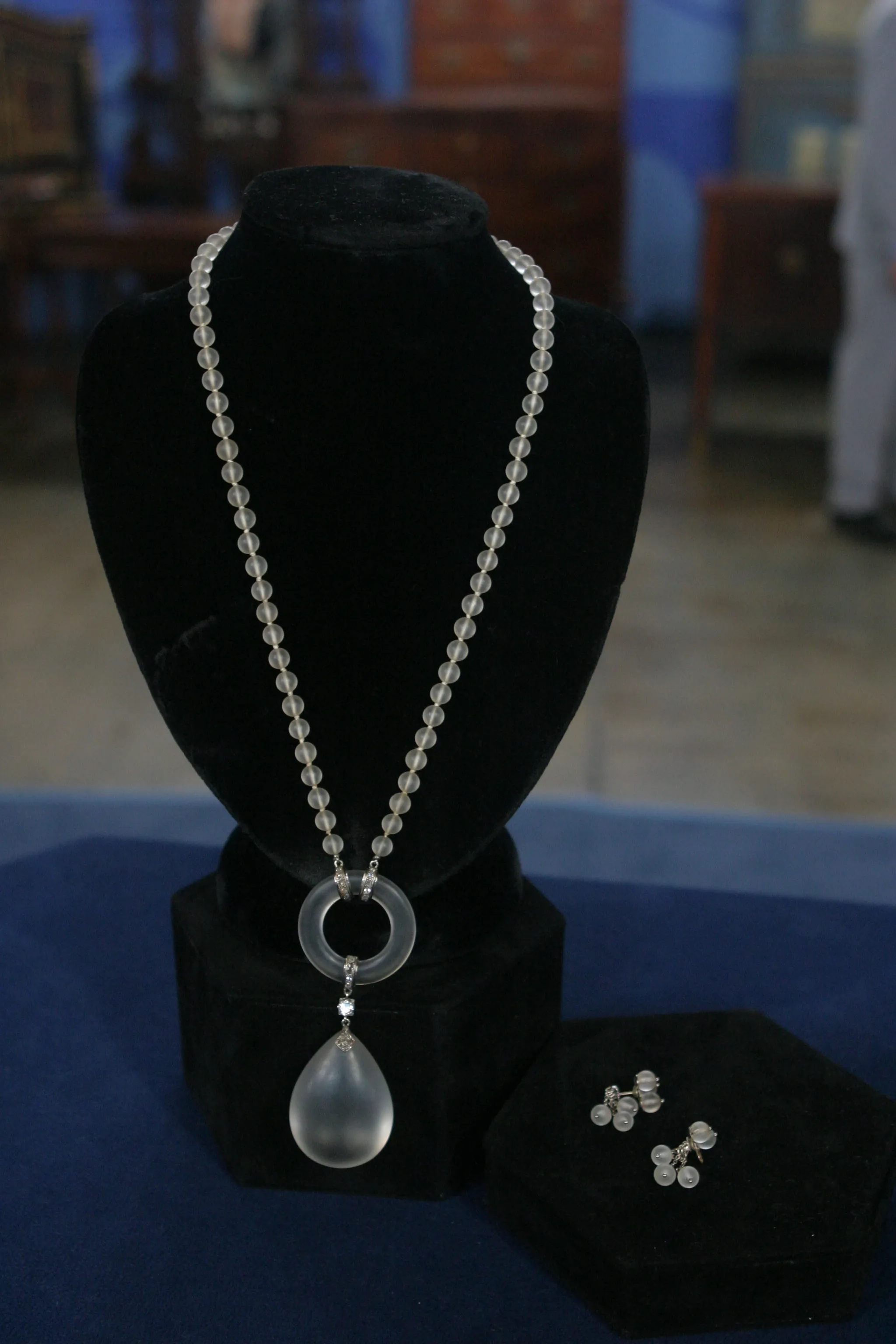GUEST: While I was a graduate student in Delaware, and the landlady told us that we could go up in the attic with another graduate student friend, and we could have whatever we liked. And so this was in the attic of an old home, and I like primitive things, so this was what I chose to take that day.
APPRAISER: Great. Well, what you have is a mid-19th century Bergama rug. Bergama is a bit of a generic term because there were a lot of different villages that had their rugs marketed in Bergama, and so there are a lot of different designs that were... they're all referred to as Bergama rugs, but there are sort of subgroups. It's a rug woven in a village in Turkey around 1850. And it exhibits a lot of the nice characteristics that you see with the village rugs from that time period. It has the natural dyes, it has the good, bold geometric designs. As subsequent generations interpreted designs, they became a little bit more primitive and they became a little bit more coarse. And so that's the main difference between the really early pieces and the later ones. Because as they get later, certain villages have more primitive looms. It's not as refined craft, it's more of a primitive either made for utilitarian purposes or a less expensive piece being made for the market.
GUEST: So when you say 1850...
APPRAISER: 1850.
GUEST: How do you determine that?
APPRAISER: Because of the design evolution that takes place between the 18th and the 19th century.
GUEST: Okay.
APPRAISER: And because they started to use synthetic dyes
GUEST: Okay.
APPRAISER: in the late 19th century.
GUEST: All right.
APPRAISER: The fact that this is free of synthetic dyes.
GUEST: Okay.
APPRAISER: And the fact that the design is still relatively pure helps us...
GUEST: Helps you to understand. .
APPRAISER: ..to put it in to the mid-19th century. Because by the late 19th century, rugs had become so popular, that they started cutting corners with both the colors and with the designs and it's very easy to recognize that they've kind of gone downhill in terms of their artistic merit.
GUEST: Okay.
APPRAISER: Now, obviously, the condition is an issue.
GUEST: Yes.
APPRAISER: Do you have thoughts about what to do with it?
GUEST: I would like to get it repaired and...
APPRAISER: Because, basically, the restoration has come in leaps and bounds, and there are workshops in Turkey now that do nothing but restoration. And they can take these worn areas, and they can re-pile them, they can redo the selvages, so that those are appropriate. And you'll notice that there's some significant loss at the bottom of the rug.
GUEST: Yes, yeah.
APPRAISER: And they can even weave out the end border. If this was a late 19th century piece in this condition, I wouldn't be making any recommendation to do the kind of restoration
GUEST: Mm-hmm.
APPRAISER: because it doesn't have the collectible merit at the end of it that this would have.
GUEST: This would have.
APPRAISER: It has to have that integrity to justify doing the restoration. Now any time we have something like this, we have to do a cost-benefit analysis of how much is it going to cost to do the restoration, and then what it's... what's it gonna be worth at the end of it. So any idea on the value?
GUEST: I do not, I've had it cleaned, it was about $300 to clean it maybe four or five years ago.
GUEST: Okay.
APPRAISER: Well, in its present condition, it's worth about $2,500.
GUEST: Wow.
APPRAISER: And the reason for that is that if you were to put about $4,000 into it, you'd have something that was worth about $15,000 retail.
GUEST: Oh, my goodness.
APPRAISER: So there's really a very advantageous equation that says to get it restored, and that wasn't always the case. Anything can be restored, it's just a question of whether the value at the end of it justifies the money that it would cost to have the restoration done.








